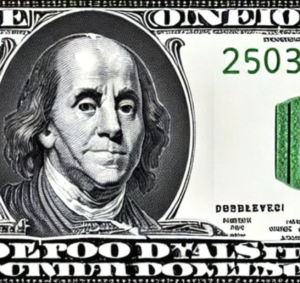Do you have a $2 bill tucked away somewhere, perhaps forgotten in an old wallet or stashed in a drawer? If so, you might be holding onto a hidden treasure without even realizing it. While $2 bills aren’t as commonly circulated as other denominations, they boast a fascinating history and can carry significant value for collectors.
The backstory of the $2 bill dates back to 1862, amidst the turmoil of the Civil War. It was introduced as a strategic measure to alleviate the demand for coins. Initially featuring the portrait of Alexander Hamilton, the inaugural Secretary of the Treasury, the design of the $2 bill has evolved over the years, showcasing a diverse array of historical figures and iconic landmarks.
The value of the $2 bill has fluctuated over time. In the early 20th century, these bills often traded below their face value due to low demand. However, a surge in interest from collectors during the 1920s and 1930s elevated their worth. By the 1950s, their value had diminished again, with many circulating at face value.
Today, the value of a $2 bill can vary significantly based on factors such as its age, condition, and rarity. Certain bills, particularly those from specific years or bearing unique serial numbers, can fetch hundreds or even thousands of dollars. For example, a series 1953 red seal $2 bill with a star in the serial number could command a price tag of up to $500.
If you find yourself in possession of $2 bills, it’s essential to assess their value before deciding on your next steps. Conducting online research or seeking appraisal from a professional can offer insights into their worth. Whether you hold onto them for potential future appreciation in value or sell them to collectors, $2 bills can be more than just pocket change.
$2 bills are not only a unique piece of American currency but can also hold surprising value for collectors. With a rich history dating back to the Civil War and featuring a variety of designs over the years, these bills have seen fluctuations in their worth. While they may have traded below face value in the past, $2 bills have garnered interest from collectors, leading to their value increasing significantly at times.
If you happen to stumble upon a $2 bill in your possession, it may be worth taking a closer look at its potential value. Factors such as the bill’s age, condition, and rarity can all play a role in determining how much it could be worth. Some $2 bills, especially those from specific years or with unique serial numbers, could fetch hundreds or even thousands of dollars from eager collectors.
For instance, a series 1953 red seal $2 bill with a star in the serial number could be worth up to $500. With such potential value hiding in your wallet or collection, it’s worth considering whether to hold onto these bills for potential future appreciation or to sell them to collectors who would appreciate them even more.
Before making any decisions about what to do with your $2 bills, it’s a good idea to do some research online or consult with a professional appraiser to get a better sense of their value. Whether you choose to keep them as a unique part of your currency collection or decide to sell them for a profit, $2 bills can offer more than just their face value. So next time you come across a $2 bill, take a moment to appreciate its history and potential worth – you may be holding onto a hidden treasure without even realizing it!






